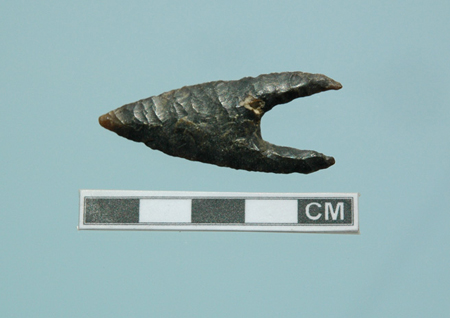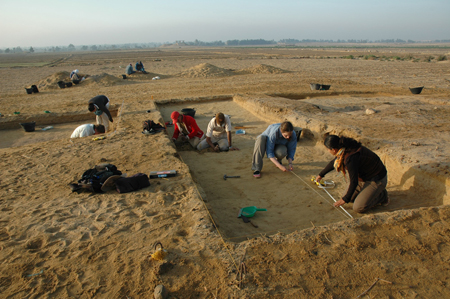|
New
discovery in Faiyum
An American archaeological mission from the University of California, Los
Angeles (UCLA) has found an almost intact Neolithic settlement and the
remnants of a Graeco-Roman village in Faiyum, while carrying out a
magnetic survey. This discovery was announced today by H.E. Farouk Hosni,
Minister of Culture.
Dr. Zahi Hawass, Secretary General of the Supreme Council of Antiquities
(SCA), said that this discovery was made while the team was surveying the
site in order to study fluctuations in the level of the lake, which caused
artifacts to be either covered with meters of sediment or dramatically
displaced by erosion.
This site was previously excavated by Gertrude Caton-Thompson in 1925, who
found several Neolithic remains. This time, however, the magnetic survey
revealed that the settlement was much larger than expected, and it
includes the remains of mud-brick walls as well as clay fragments.

Dr. Willeke Wendrich of UCLA stated that the Faiyum Neolithic had so far
been considered as one period but this view may have to change as the
results of the study reveal that it might be dated to different periods
within the Neolithic.
In order to understand the layout of the Qaret Al-Rusas Roman village, on
the northeastern side of Lake Qarun, without excavating it, the mission
carried out a magnetic survey. The map shows clear wall lines and streets
in an orthogonal pattern typical of the Graeco-Roman period.

Early studies,
said Wendrich, show that the site was covered by the waters of Lake Qarun
at an unknown time and for an unknown period, as not only the surface is
completely leveled but potsherds and limestone flakes are covered with a
thick layer of calcium carbonate, which is usually indicative of a stand
of 30-40cm deep water.
The missionís work extended to Karanis on the northern edge of the Faiyum
depression where remains of a Graeco-Roman city can be seen. Dr. Hawass
says that when a team from the University of Michigan excavated the site
between 1926 and 1935 they found the houses in excellent condition with
many organic remains having survived through the ages. However, the site
was not backfilled, and Wendrich points to damage to the buildings caused
by rainfall and wind erosion. Excavations in the area uncovered remains of
an ancient creek or pond. At that moment, it had not been established
whether this fresh water source coexisted with the town or was a much
earlier phenomenon.
The main purpose of the survey was to better understand the archaeological
and zooarchaeological remains at Karanis in a well-excavated context, as
well as understanding the life and economic activities of the people who
lived at Karanis.
BACK
to The Plateau Homepage |

